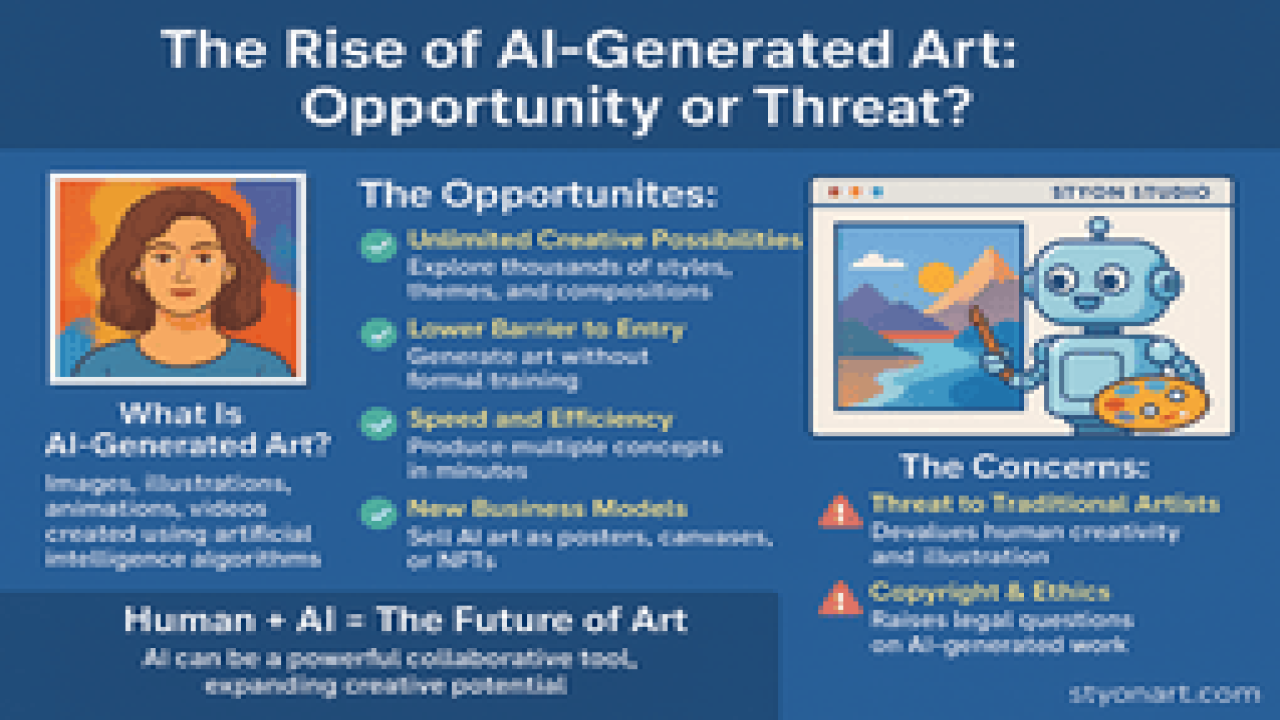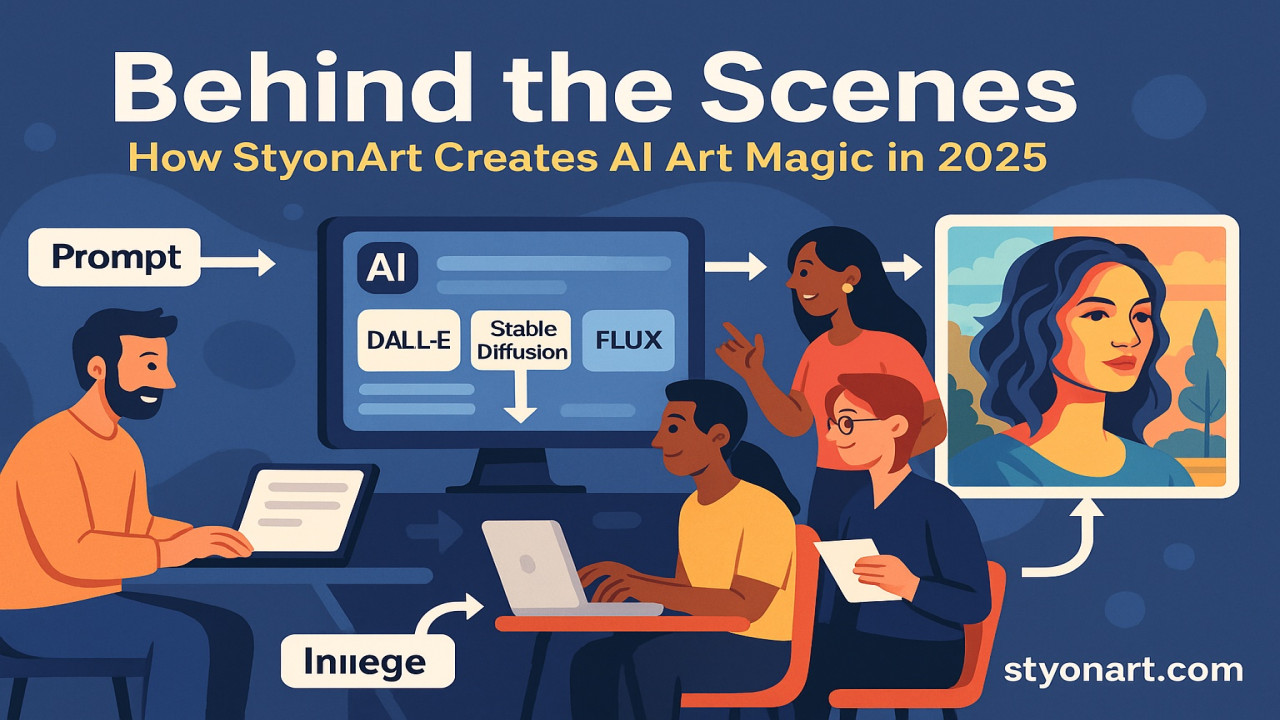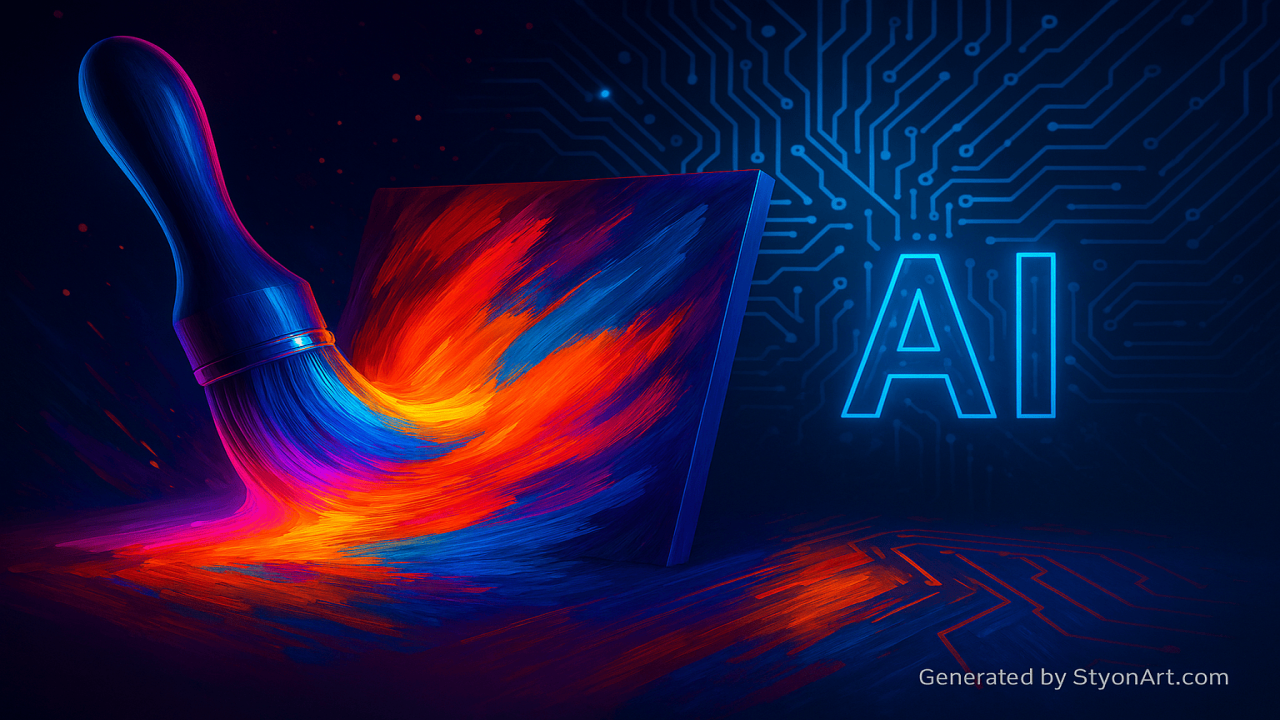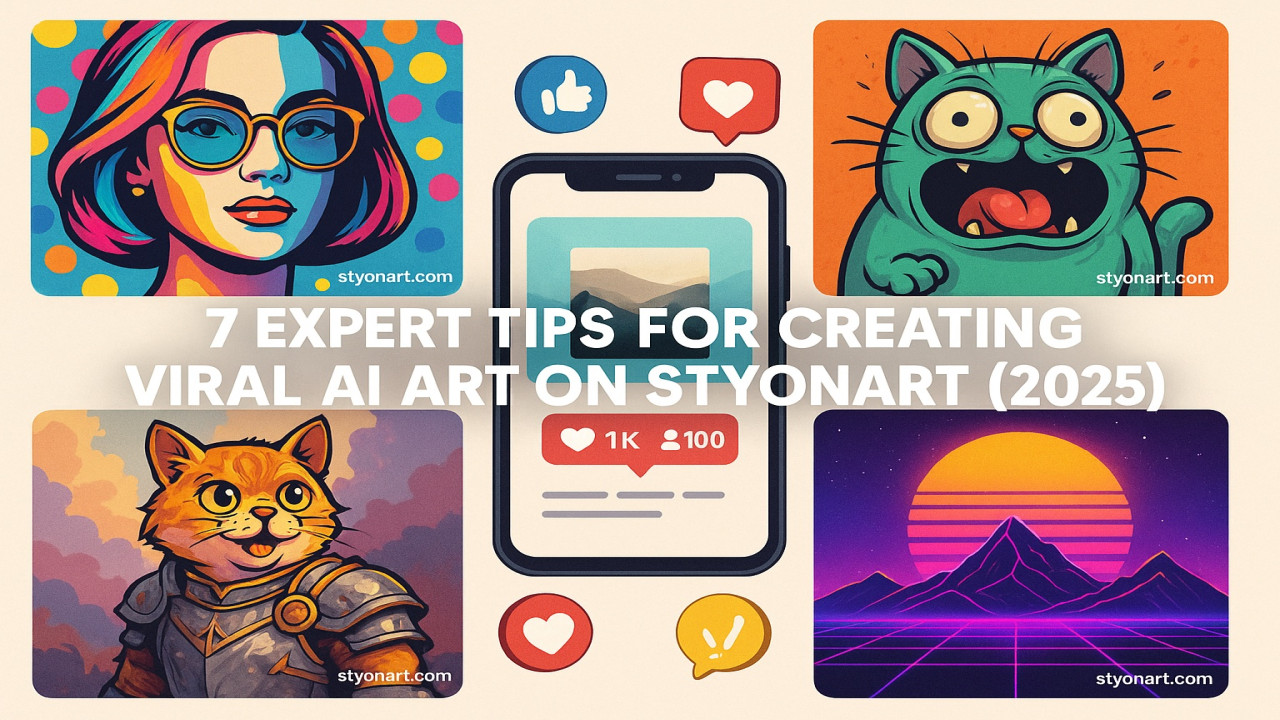The Secret to Creating Viral AI Art: What Makes People Share It
⚡ Introduction: The Viral Power of AI Art
In today’s world of short attention spans, visual impact is everything.
But why do some AI artworks explode across social media while others stay unseen?
The truth is, virality is not random — it’s a blend of emotion, storytelling, and timing.
Let’s break down the science behind what makes AI art truly shareable.
🧠 1️⃣ Emotional Impact Comes First
People don’t share images — they share feelings.
The most viral AI artworks trigger an instant reaction: awe, joy, nostalgia, or curiosity.
Examples that go viral often include:
🌀 Nostalgic themes (retro-futurism, childhood memories)
💫 Emotive faces or gestures
🔥 Unexpected contrasts (robot + emotion, fantasy + realism)
❤️ Human connection (love, loss, hope, triumph)
✅ Tip: Ask yourself — “What emotion do I want the viewer to feel?” before generating your art.
🎨 2️⃣ Composition & Focus
Virality requires visual clarity.
The human brain decides in 0.13 seconds whether to engage with an image.
Keep your composition strong by:
✔ Placing the subject in the center or using the rule of thirds
✔ Avoiding clutter and distraction
✔ Using strong lighting and color contrast
💡 A simple, bold image always performs better than a complex one.
🌈 3️⃣ Use Color to Evoke Emotion
Color psychology is powerful.
Each color activates a specific response:
🔴 Red: passion, energy, excitement
🟢 Green: calm, balance, nature
🔵 Blue: trust, stability, peace
🟣 Purple: mystery, creativity
🟡 Yellow: joy, optimism
Experiment with lighting styles like neon glow, golden hour, or cinematic tones — they make AI art visually irresistible on social feeds.
🔍 4️⃣ Storytelling Through the Prompt
The best prompts tell a story, not just describe an image.
Example of a weak prompt:
“A woman standing in front of a sunset.”
Better version:
“A lone traveler watching the sunset on Mars, in awe, red dust swirling around her, cinematic lighting.”
📖 Add narrative context — it transforms your artwork from an image into an experience.
📱 5️⃣ Optimize for Platforms
Each platform has its own visual rhythm:
Instagram: vibrant colors, emotional impact, carousel posts.
TikTok: short videos showing prompt → result transitions.
Pinterest: vertical compositions, warm tones, inspirational themes.
✅ Always export in 1080×1350 (portrait) or 1280×720 (landscape) depending on the platform.
💬 6️⃣ Add a Human Touch
Even though AI creates it, people connect when they see you behind the art.
Show your workflow, thought process, or emotion behind the creation.
This builds trust and makes your audience part of your creative story.
👉 Example: “This artwork was inspired by the feeling of hope in chaos.”
📈 7️⃣ Timing & Consistency
Post when your audience is active — usually:
Instagram/TikTok: 6–9 PM local time
Pinterest: mornings (7–10 AM)
Be consistent: posting 3–4 times per week increases reach exponentially.
⚡ Combine your uploads with short motivational captions or questions — they double engagement.
🧩 Conclusion: Viral Art is Crafted, Not Luck
Virality is a science wrapped in emotion.
If you mix emotion + storytelling + clarity + consistency, your AI art will stand out and spread.
🌟 Remember — it’s not about reaching millions, but about connecting deeply with thousands who feel your message.
🚀 Start creating your next viral masterpiece today with StyonArt.com — where imagination meets visibility.













Comments (0)
No comments found